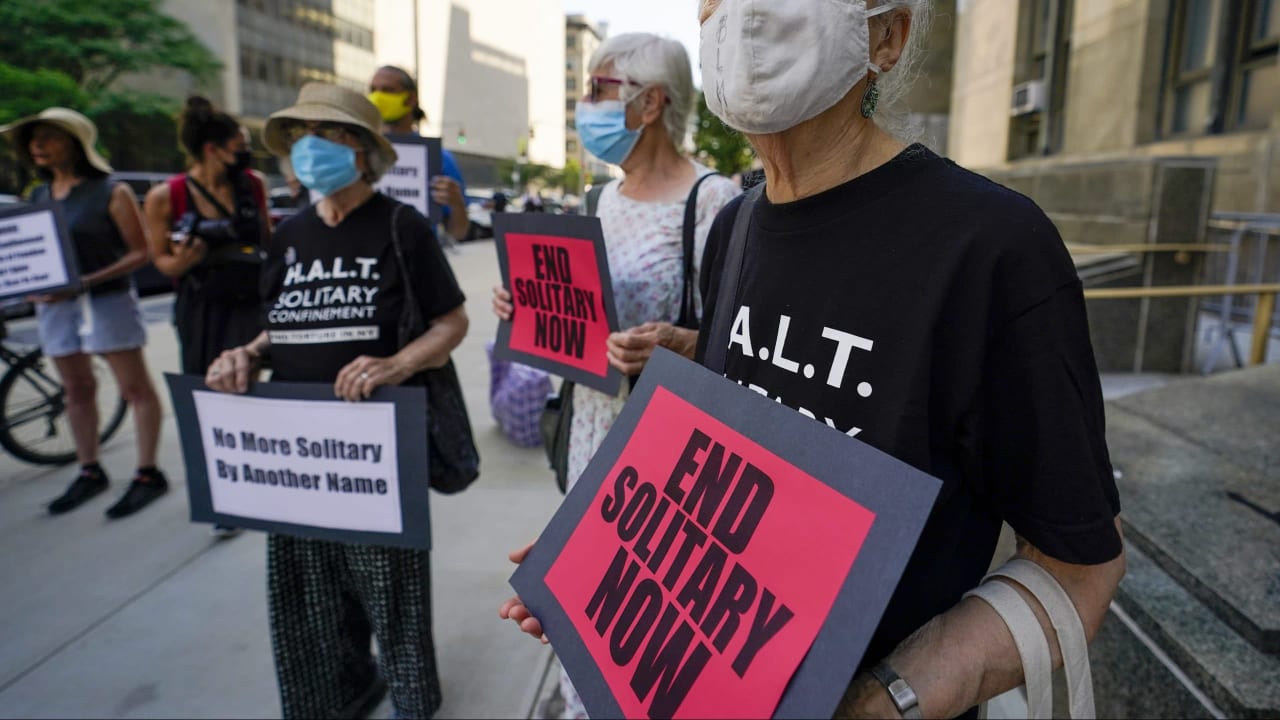Report: Black imprisonment rates drop 70 percent for women, 48 percent for men since 2000
Researchers from The Sentencing Project hailed the downward trends as a positive step toward reducing mass incarceration and weakening the system's grip on Black families.
Black imprisonment rates have dropped significantly since 2000.
While incarceration rates in the United States increased by 700 percent between the 1970s and the early 2000s, The 19th News reported that a recent analysis from advocacy organization The Sentencing Project found that from 2000 to 2021, the imprisonment rate declined by a whopping 70 percent for Black women and 48 percent for Black males.
In comparison, Latinas witnessed an 18 percent reduction, Latinos had a 34 percent decline, white women saw a 12 percent increase, and white males saw a 27 percent decrease.

Researchers hailed the downward trends as a positive step toward reducing mass incarceration and weakening the system’s grip on families of color, particularly Black families.
“The work that’s been done to create reforms has had an impact, and so we should feel good about that,” said Nazgol Ghandnoosh, author of the report and The Sentencing Project’s co-director of research. “But it’s very much in jeopardy, especially given the response to the uptick in crime that happened during the pandemic.”
The Sentencing Project data notes that the number of Black Americans imprisoned has dropped by 39 percent from its high in 2002. For Black men born in 2001, the odds of being imprisoned throughout their lifetime have fallen from one in three for those born in 1981 to a still alarming one in five.
Despite progress, Black people continue to have the highest incarceration rate, and connections between crime, race and gender affect Black men and women differently. Government data referenced in the report indicated that Black women were imprisoned at 1.6 times the rate of their white counterparts in 2021, while Black males were imprisoned at 5.5 times the rate of white men.
While women make up less than 10 percent of the entire incarcerated population, their numbers have climbed rapidly since the 1980s, rising from 26,378 in 1980 to 213,722 in 2016.
Women are more likely than males to be incarcerated for a drug or property charge, and Black women are disproportionately affected despite declining prison and jail populations. The recent increase in incarceration for white women and drop for Black women can be ascribed to reform efforts centered in urban areas, while incarceration in rural regions, particularly rural prisons, continues to expand.
Analyzing the impact of specific reforms on national incarceration trends poses a challenge, but Ghandnoosh highlights California, New York and New Jersey as areas making significant strides.
In New York, 2009 drug law reforms abolished mandatory minimum sentences, allowing judges to issue shorter sentences, probation or drug treatment for drug crime convicts. The change led to reduced recidivism and racial disparities in drug convictions, along with increased referrals to diversion treatment programs, as evidenced by a Vera Institute analysis.
National organizations such as the Vera Institute and the Black Women’s Justice Institute advocate for community-based approaches that address the root causes of crime, including economic and educational disparities.
Even with advancements for Black men and women, it is “important to put this in context,” said Sydney McKinney, executive director of the Black Women’s Justice Institute.
“The declines that we have seen do not match the significant increases that got us here, so there is still so much work to be done,” said McKinney. “Incarceration increased 700 percent since the 1970s, and now we’re seeing a 70 percent decline, which is not bringing us back to the levels we saw during the late ’80s and early ’70s.”
TheGrio is FREE on your TV via Apple TV, Amazon Fire, Roku and Android TV. Also, please download theGrio mobile apps today!


